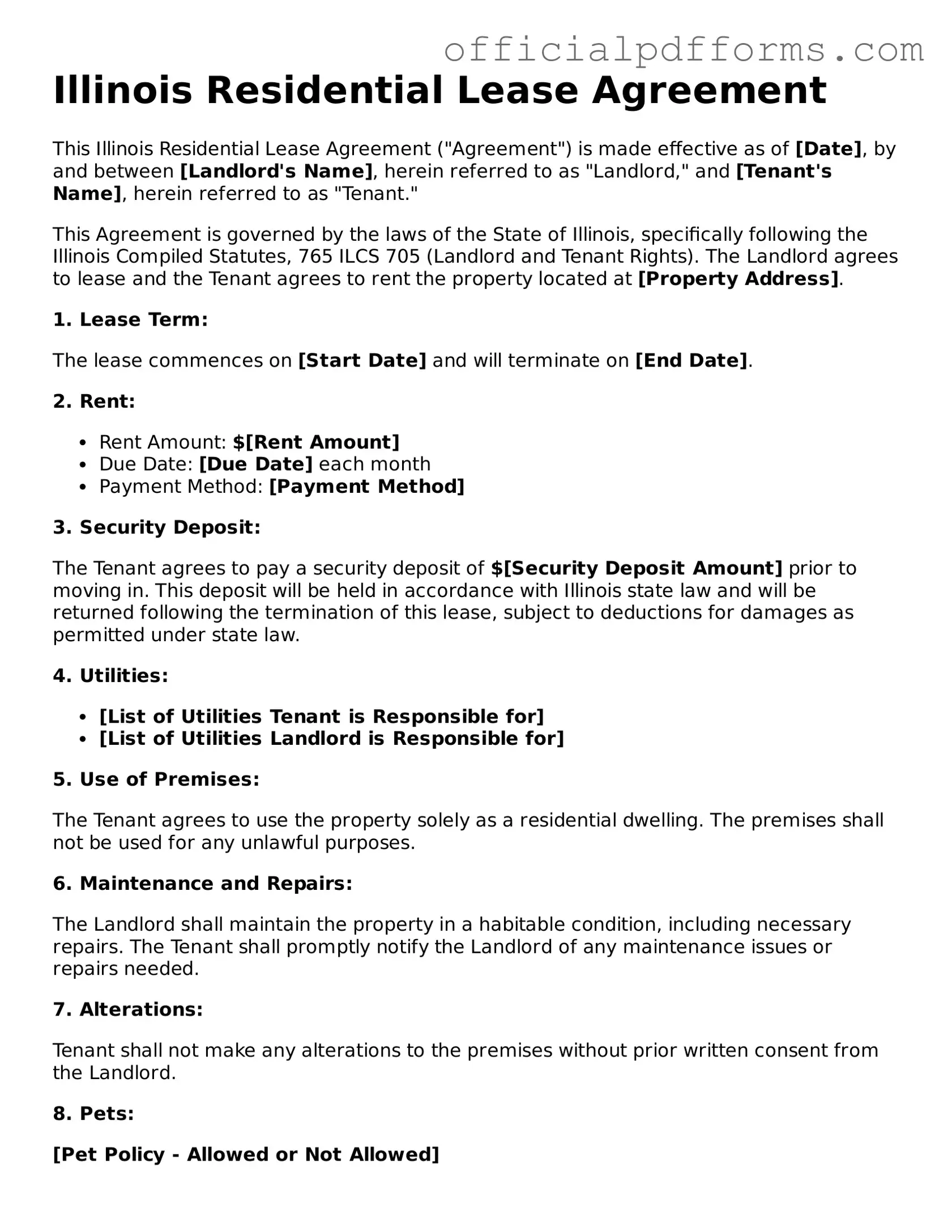Printable Illinois Lease Agreement Template
The Illinois Lease Agreement form is a legally binding document that outlines the terms and conditions between a landlord and tenant for renting residential or commercial property in Illinois. This form serves to protect the rights and responsibilities of both parties, ensuring a clear understanding of the rental arrangement. To ensure a smooth leasing process, consider filling out the form by clicking the button below.
Access Form Online
